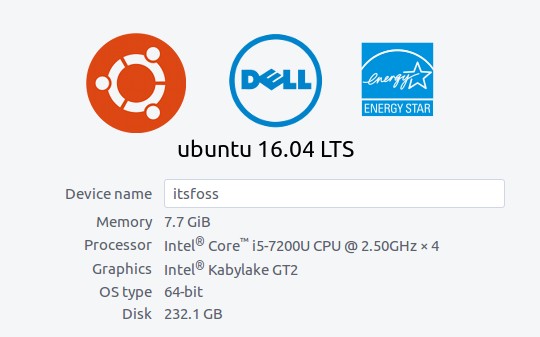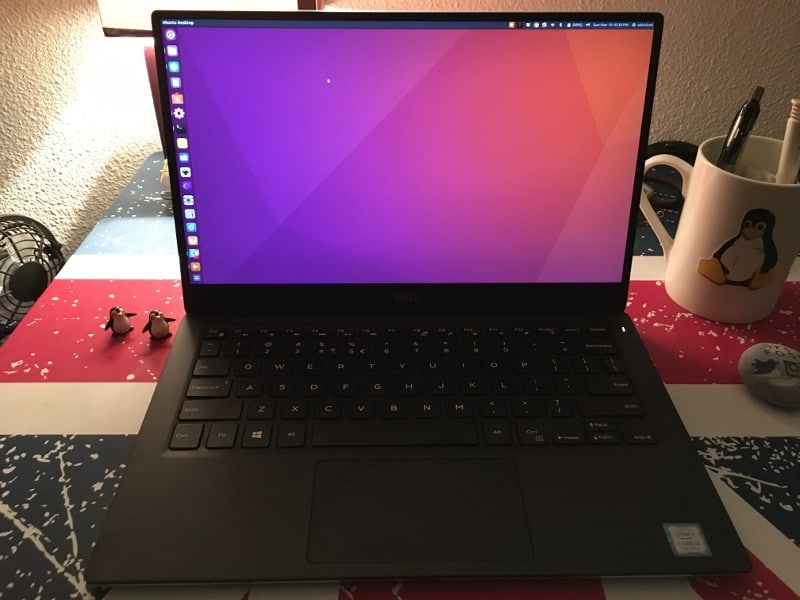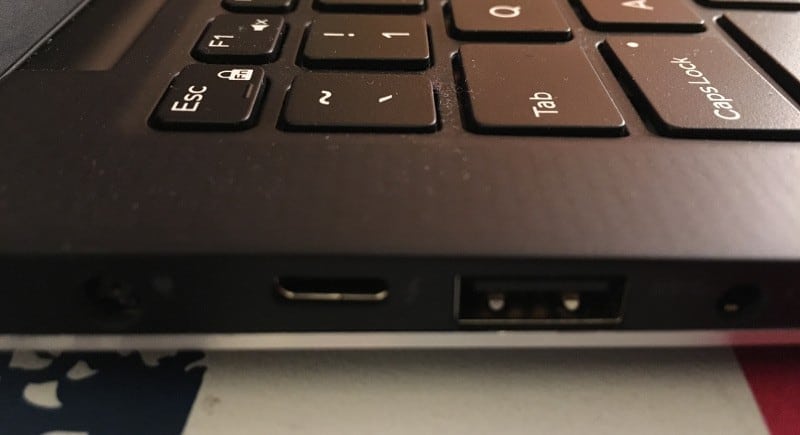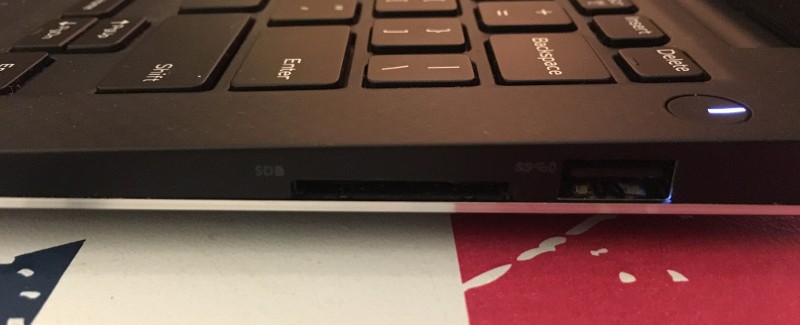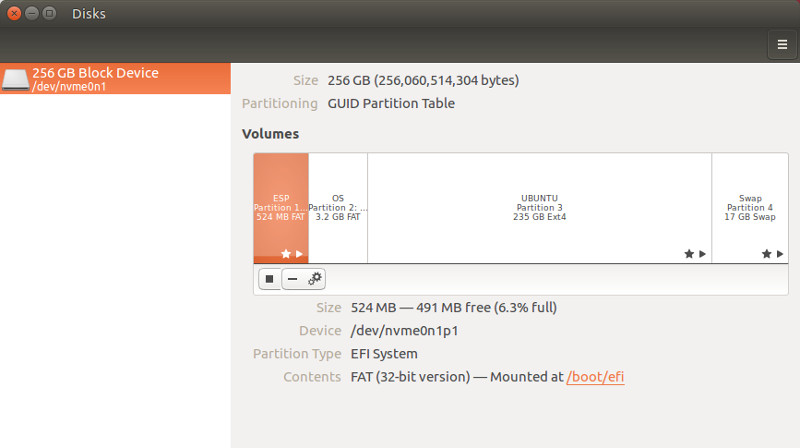An Ubuntu User’s Review Of Dell XPS 13 Ubuntu Edition
During Black Friday sale last year, I took the bullet and ordered myself a Dell XPS 13 with the new Intel Kaby Lake processor. It got delivered in the second week of December and if you follow It’s FOSS on Facebook, you might have seen the live unboxing.
Though I was tempted to do the review of Dell XPS 13 Ubuntu edition almost at the same time, I knew it won’t be fair. A brand new system will, of course, feel good and work smooth.
But that’s not the real experience. The real experience of any system comes after weeks, if not months, of use. That’s the reason I hold myself back and waited three months to review Dell XPS Kobylake Ubuntu edition.
Dell XPS 13 Ubuntu Edition Review
Before we saw what’s hot and what’s not in the latest version of Dell XPS 13, I should tell you that I was using an Acer R13 ultrabook book before this. So I may compare the new Dell system with the older Acer one.
Dell XPS 13 has several versions based on processor. The one I am reviewing is Dell XPS13 MLK (9360). It has i5-7200U 7th generation processor. Since I hardly used the touch screen in Acer Aspire R13, I chose to go with the non-touch version of XPS. This decision also saved me a couple of hundreds of Euro.
It has 8 GB of LPDDR3 1866MHz RAM and 256 GB SSD PCIe. Graphics is Intel HD. On connectivity side, it’s got Killer 1535 Wi-Fi 802.11ac 2×2 and Bluetooth 4.1. Screen is InfinityEdge Full HD (1 920 x 1080).
Now, you know what kind of hardware we’ve got here, let’s see what works and what sucks.
Look and feel
At 13.3″, Dell XPS 13 looks even smaller than a regular 13.3″ laptop, thanks to its non-existent bezel which is the specialty of the infinite display. It is light as a feather with weight just under 1.23 Kg.
The outer surface is metallic, not very shiny but a decent aluminum look. On the interior, the palm rest is made of carbon fiber which is very comfortable at the rest. Unlike the MacBook Air that uses metallic palm rests, the carbon fiber ones are more friendly, especially in winters.
It is almost centimeter and a half high at it’s thickest part (around hinges). This also adds a plus point to the elegance of XPS 13.
Overall, Dell XPS 13 has a compact body and an elegant body.
Keyboard and touchpad
The keyboard and touchpad mix well with the carbon fiber interiors. The keys are smooth with springs in the back (perhaps) and give a rich feel while typing. All of the important keys are present and are not tiny in size, something you might be worried of, considering the overall tiny size of XPS13.
Oh! the keyboards have backlit support. Which adds to the rich feel of this expensive laptop.
While the keyboard is a great experience, the same cannot be said about the touchpad. In fact, the touchpad is the weakest part which mars the overall good experience of XPS 13.
The touchpad has a cheap feeling because it makes an irritating sound while tapping on the right side as if it’s hollow underneath. This is something that has been noticed in the earlier versions of XPS 13 but hasn’t been given enough consideration to fix it. This is something you do not expect from a product at such a price.
Also, the touchpad scroll on websites is hideous. It is also not suitable for pixel works because of difficulty in moving little adjustments.
Ports
Dell XPS 13 has two USB 3.0 ports, one of them with PowerShare. If you did not know, USB 3.0 PowerShare ports allow you to charge external devices even when your system is turned off.
It also has a Thunderbolt (doubles up as USB Type-C port). It doesn’t have HDMI port, Ethernet port or VGA port. However, all of these three can be used via the Thunderbolt port and external adapters (sold separately).
It also has an SD card reader and a headphone jack. In addition to all these, there is an anti-theft slot (a common security practice in enterprises).
Display
The model I have packs 1920x1080px. It’s full HD and display quality is at par. It perfectly displays the high definition pictures and 1080p video files.
I cannot compare it with the qHD model as I never used it. But considering that there are not enough 4K contents for now, full HD display should be sufficient for next few years.
Sound
Compared to Acer R13, XPS 13 has better audio quality. Even the max volume is louder than that of Acer R13. The dual speakers give a nice stereo effect.
Webcam
The weirdest part of Dell XPS 13 review comes now. We all have been accustomed of seeing the webcam at the top-middle position on any laptop. But this is not the case here.
XPS 13 puts the webcam on the bottom left corner of the laptop. This is done to keep the bezel as thin as possible. But this creates a problem.
When you video chat with someone, it is natural to look straight up. With the top-middle webcam, your face is in direct line with the camera. But with the bottom left position of web cam, it looks like those weird accidental selfies you take with the front camera of your smartphone. Heck, people on the other side might see inside of your nostrils.
Battery
Battery life is the strongest point of Dell XPS 13. While Dell claims an astounding 21-hour battery life, but in my experience, it smoothly gives a battery life of 8-10 hours. This is when I watch movies, browse the internet and other regular stuff.
There is one strange thing that I noticed, though. It charges pretty quick until 90% but the charging slows down afterward. And it almost never goes beyond 98%.
The battery indicator turns red when the battery status falls below 30% and it starts displaying notifications if the battery goes below 10%. There is small light indicator under the touchpad that turns yellow when the battery is low and it turns white when the charger is plugged in.
Overheating
I have previously written about ways to reduce laptop overheating in Linux. Thankfully, so far, I didn’t need to employ those tricks.
Dell XPS 13 remains surprisingly cool when you are using it on battery, even in long runs. The bottom does get heated a little when you use it while charging.
Overall, XPS 13 manages overheating very well.
The Ubuntu experience with Dell XPS 13
So far we have seen pretty generic things about the Dell XPS 13. Let’s talk about how good a Linux laptop it is.
Until now, I used to manually install Linux on Windows laptop. This is the first Linux laptop I ever bought. I would also like to mention the awesome first boot animation of Dell’s Ubuntu laptop. Here’s a YouTube video of the same:

One thing I would like to mention here is that Dell never displays Ubuntu laptops on its website. You’ll have to search the website with Ubuntu then you’ll see the Ubuntu editions. Also, Ubuntu edition is cheaper just by 50 Euro in comparison to its Windows counterpart whereas I was expecting it to be at least 100 Euro less than that of Windows.
Despite being an Ubuntu preloaded laptop, the super key still comes with Windows logo on it. It’s trivial but I would have loved to see the Ubuntu logo on it.
Now talking about Ubuntu experience, the first thing I noticed was that there was no hardware issue. Even the function and media keys work perfectly in Ubuntu, which is a pleasant surprise.
Dell has also added its own repository in the software sources to provide for some Dell specific tools. You can see the footprints of Dell in the entire system.
You might be interested to see how Dell partitioned the 256Gb of disk space. Let me show that to you.
As you can see, there is 524MB reserved for EFI. Then there is 3.2 GB of factory restore image perhaps.
Dell is using 17Gb of Swap partition, which is more than double of the RAM size. It seems Dell didn’t put enough thought here because this is simply waste of disk space, in my opinion. I would have used not more than 11 GB of Swap partition here.
As I mentioned before, Dell adds a “restore to factory settings” option in the Grub menu. This is a nice little feature to have.
One thing which I don’t like in the XPS 13 Ubuntu edition is the long boot time. It takes entire 23 seconds to reach the login screen after pressing the power button. I would expect it to be faster considering that it uses SSD PCIe.
If it interests you, the XPS 13 had Chromium and Google Chrome browsers installed by default instead of Firefox.
As far my experience goes, I am fairly impressed with Dell XPS 13 Ubuntu edition. It gives a smooth Ubuntu experience. The laptop seems to be a part of Ubuntu. Though it is an expensive laptop, I would say it is definitely worth the money.
To summarize, let’s see the good, the bad and the ugly of Dell XPS 13 Ubuntu edition.
The Good
- Ultralight weight
- Compact
- Keyboard
- Carbon fiber palm rest
- Full hardware support for Ubuntu
- Factory restore option for Ubuntu
- Nice display and sound quality
- Good battery life
The bad
- Poor touchpad
- A little pricey
- Long boot time for SSD powered laptop
- Windows key still present 😛
The ugly
How did you like the Dell XPS 13 Ubuntu edition review from an Ubuntu user’s point of view? Do you find it good enough to spend over a thousand bucks? Do share your views in the comment below.
